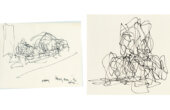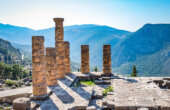The Birth of the Pastoral Corporation

As the corporation was growing ever more powerful in the mid-20th century, the American city was also undergoing a period of fundamental change. While urban decentralization in the form of middle- and upper-middle-class residential suburbs, suburban industries, and working-class suburbs had been extending metropolitan zones since the 19th century, the dense and diverse city center remained the energetic and magnetic hub of American cultural and economic life before the 1950s. The postwar milieu tipped the balance toward the rapid decentralization of urban cores and their concentrations of commerce, industry, and residential neighborhoods.
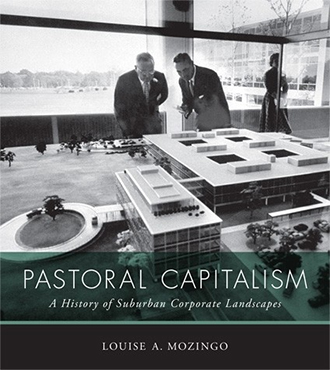
As a number of scholars have emphasized, the iconic suburbs of white, middle-class, nuclear families were a well-known part of this story but by no means all of it. Added to prewar suburban expansion, the rapid restructuring of postwar metropolitan areas formed a complexity of patches, spokes, and swaths of separated, specialized, and low-density land uses in the peripheral zones around older city centers, including industry, retail centers, ethnic enclaves, and working-class neighborhoods. This rapid decentralization created the conditions that were conducive to the invention of specialized suburban management facilities by large corporations.
To many privileged Americans of the 1950s and 1960s, the center city appeared to be in a state of inexorable decline. The proliferating automobile inundated the center city’s gridded 19th-century street pattern, and “congestion” seemed intractable and highly detrimental to economic activity. Increasing numbers of people of color walked the streets. Vacancies and abandoned properties were on the rise as tenants relocated to the suburbs and owners could find no replacements. New construction in the city center required homage to an ensconced and layered system of political patronage. Even then, wedging in new skyscrapers that could accommodate large corporate staffs in a single building proved difficult in blocks divided into multiple parcels of land and built out with varied buildings, including many used for industry. To redress these perceived shortcomings, the urban renewal process acquired property, removed tenants, destroyed buildings, and reparceled land in order to insert freeways, offer large lots for corporate offices, supply parking, and confine the poor to mass public housing. In the process, it took apart what remained of the vitality of the old urban core and added to the inventory of open urban lots and dysfunctional neighborhoods. The center city was noisy, diverse, crowded, unpredictable, inflexible, expensive, old, and messy — a dubious state of affairs for postwar capitalists bent on expansion.
To some, the center city was noisy, diverse, crowded, unpredictable, inflexible, expensive, old, and messy — a dubious state of affairs for postwar capitalists bent on expansion.
In contrast, the suburbs seemed to warrant a sense of forward-looking optimism. At the city’s edge, an effective alliance of well-financed real estate investors, large property owners, local governments, federal loan guarantors, and utopian planners opened property for speedy development. Building along federal- and state-funded road systems that brought these large tracts of land into the economy of metropolitan regions, this alliance conceived of low-density, auto-accessed landscapes of highly specified uses with plenty of parking, and wrote these forms into stringent zoning and building regulations. Once built, these suburban expansion zones were deliberately resistant to change, with the end of producing both social stasis and secure real estate values.
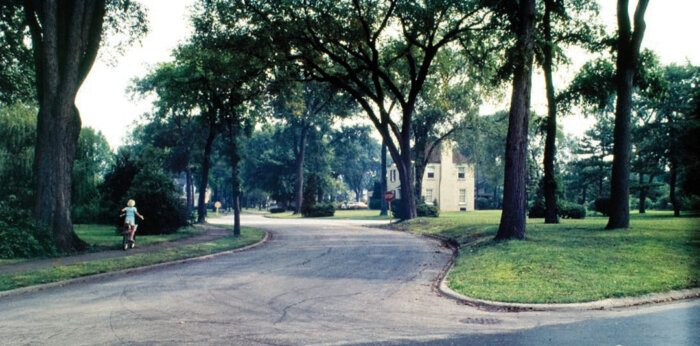
The suburbs as a whole may have been diverse, but the process of building their component parts created insidious racial and class divisions. While the separation of different classes and races of home dwellers is the best-understood part of this spatial process, all kinds of workers were categorically set apart in discrete landscapes as well — corporate executives from factory labor, retail clerks from typists, electronics researchers from accountants. Hence the suburbs were predictable, spacious, segregated, specialized, quiet, new, and easily traversed — a much more promising state of affairs to corporations bent on expansion.
The suburbs as a whole may have been diverse, but the process of building their component parts created insidious racial and class divisions.
In the suburbs, people and functions that were once stacked, mixed together, and in proximity to each other in the center city resided in separate buildings in separate suburban zones. The process was not complete in the 1950s, but it was continuing and predominant (for a succinct case study of the sorting in suburbs of previously mixed urban land uses, see Robert Fishman’s article “On Big Beaver Road: Detroit and the Diversity of American Metropolitan Landscapes”). Between the detached suburban buildings lay parking lots, ever wider roadways, and, in good measure, green space — vaguely “natural” in appearance and trimming even the most utilitarian of land uses. And while the restructuring of activities and transport made sense in the efficiency calculus of capitalism, the inclusion of green space reflected a more ineffable yet deeply ingrained value — the ideal of the pastoral in the American landscape.
The pastoral landscape ideal has broad Western origins, but its immediate antecedents in American culture lay in the aesthetic theories of 18th-century Britain. During this period, landowners executed estate designs not of the obvious contrivance of geometry and axes, as had prevailed among elites since the Roman era, but rather as a reproduction of a various, sinuous, and undulating nature — what the Marxist critic and author Raymond Williams calls “pleasing prospects.” To this idealization of nature, the philosophical and political discussion of the period attached notions of morality, goodness, and social order.
Versions of nature became the subject of aesthetic debate that by the end of the 18th century had resolved into a three-part landscape classification. The “beautiful” displayed gently rolling expanses of grass interspersed with copses of trees, inducing a soothing tranquility. The “picturesque” presented the juxtaposition of rock outcrops, pitched slopes, shrub masses, and contrasts of light and shadow from dense tree groves, creating a sense of curiosity and stimulation. The “sublime” could not be made, only found in the awesome, even terrifying, drama of mountains, waterfalls, cliff faces, river gorges, and roiling ocean.
By the mid-19th century the popular literature of the American landscape gardener Andrew Jackson Downing introduced these versions of ideal nature and their implications to American audiences. His widely read books and journals promoted the picturesque as a landscape ideal and, in particular, as an ideal landscape for Americans to live in. Downing was America’s early and influential advocate of the suburbs. While he accepted the growth of cities and their commerce, he also understood them as demoralizing and requiring the antidote of retreat, preferably in a residence outside the city. Picturesque nature bolstered the spirit and restored moral order. For those constrained to remain in the city itself, Downing proposed large-scale public parks.
While Andrew Jackson Downing accepted the growth of cities and their commerce, he also understood them as demoralizing and requiring the antidote of retreat, preferably in a residence outside the city.
Downing did not stand alone in his views; they resonated with the recurrent skepticism about the enterprising exertions of urban life that harkened back to Thomas Jefferson and found new force in the mid-19th century with Ralph Waldo Emerson and Henry David Thoreau. As elites began their withdrawal into picturesque suburbs like Llewellyn Park, New Jersey, a coalition of urban reformers, self-styled philanthropists, real estate interests, and political bosses determinedly brought a version of Downing’s landscape and the American pastoral ideal to the masses in the form of the urban park. Due to his untimely death, Downing never saw the advent of Central Park in New York City. Instead, Frederick Law Olmsted took over Downing’s cause and became the first superintendent of Central Park and, later, its codesigner with Calvert Vaux, Downing’s former partner.
Olmsted explicitly described the park’s design intent as “pastoral” on the whole, limiting “picturesque” zones to areas where the existing terrain was so craggy with granitic outcrops that smoothing out was impossible. Olmsted eschewed the heightened contrasts of the picturesque as agitating to the already stressed urban dweller. Versed in Downing, an admirer of Emerson, and nostalgic for the Connecticut countryside of his childhood, Olmsted employed the term pastoral instead of the beautiful or picturesque to evoke a familiar, tranquil, and cultivated nature as a counterpoint to the city. Olmsted’s pastoral wove together the precepts of 18th-century landscape theory and Jeffersonian agrarianism.
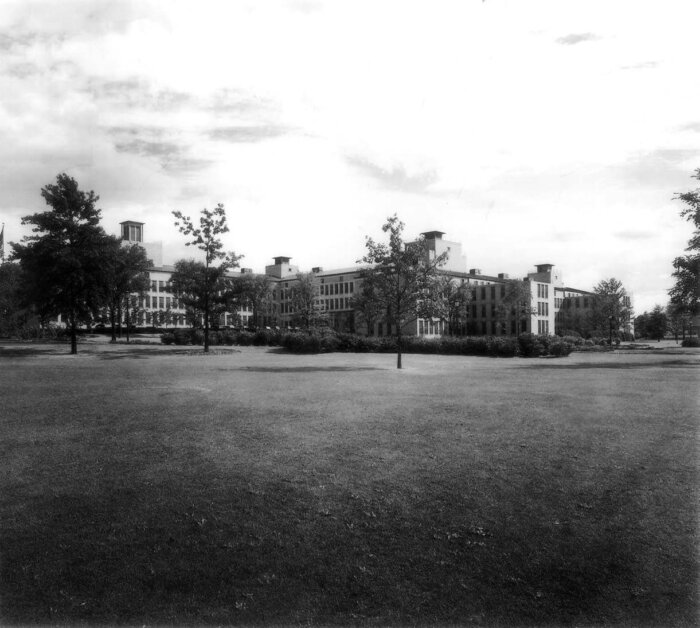
Even more than Downing, Olmsted regarded the landscape as an instrument of social order. Gently undulating grass, serpentine lakes, sinuous pathways, and leafy woodland groves provided urban dwellers a much-sought-after alternative to the dense industrial city, presumably with salutary moral as well as physical effects. Not intended as a zone of active use, the pastoral public park presented composed scenery for passive viewing. The purpose of this engagement Olmsted described with typical zeal: “No one who has closely observed the conduct of people who visit Central Park can doubt it exercises a distinctly harmonizing and refining influence upon the most unfortunate and lawless of the city — an influence favorable to courtesy, self-control, and temperance.” Urban dwellers proved much more resistant to “harmonizing” than Olmsted expected, and in the face of American pluralism, public parks became more diverse in their activities and accommodations. Nevertheless, as reiterations of Central Park appeared in cities large and small across the United States by the beginning of the 20th century, the enveloping pastoral aesthetic of the public park prevailed and carried with it the equation of pastoral scenery and ameliorative social influence.
Public parks reinforced the pastoral as an ideal aesthetic to the striving classes of industrializing cities. Like Riverside outside Chicago, the application of this ideal to residential districts on the city periphery by Olmsted and his followers created polite pastoral suburbs typified by open-lot houses, coordinated infrastructure, limited building heights, and expansive, fenceless front yards presenting a continuous streetside landscape. These pastoral suburbs proved immensely appealing to upwardly mobile Americans and lucrative to investors. The ongoing advocacy of zealous housing reformers and marketing efforts of speculative real estate developers enthroned leafy residential suburbs as the right and proper environment for a family. Government policy, tax subventions, zoning, and mortgage regulations subsidized and sustained the proliferation of pastoral suburbs.
The ongoing advocacy of zealous housing reformers and marketing efforts of speculative real estate developers enthroned leafy residential suburbs as the right and proper environment for a family.
By the mid-20th century the trenchant correlation of greenness with goodness held sway in American culture. The introduction of corporate landscapes into the pastoral suburbs usefully subsumed the capitalist enterprise into the pastoral suburb’s implied moral order. After all, the broad public viewed the new phalanx of giant corporations as suspect, even threatening. As the business historian Alfred Chandler put it, the majority of Americans found the “concentrated economic power such enterprises wielded violated basic democratic values.” Their acceptance as part of the pastoral landscape embodied Leo Marx’s assertion that the American pastoral ideal mediated “the moral ambiguity, the intertwining of constructive and destructive consequences, which are generated by technological progress” and thus quelled skepticism in the moment, if not beyond. In this sense, the appropriation of the pastoral landscape by American business became a useful trope for corporate capitalism.
The postwar structure of corporations, the decentralization of American cities, and the dominance of pastoral taste convened to mold a discrete set of three suburban forms comprising pastoral capitalism: the corporate campus, the corporate estate, and the office park. For both functional and emblematic reasons, these three interrelated landscape types materialized in the suburbs to serve a particular stratum of the corporate hierarchy.
Each has a distinct layout of buildings, parking, driveways, and pastoral surround. The landscape history of pastoral capitalism is situated at the site plan scale, between the fine scale of gardens and architecture and the large scale of planning and suburbs. Site plans — that is, the arrangement of buildings, parking lots, driveways, roads, infrastructure, and green spaces of a particular property and its location within the larger suburban fabric — are key to understanding how pastoral capitalism served big business and affected metropolitan form. Because of the way site plans configure a development’s density, expected use, means and extent of access, and relation to the public realm, they have a profound effect on the environmental costs, long-term adaptability, and social milieu of built environments. The detail designs of both the green spaces and buildings of suburban corporate workplaces do matter, but they cannot be seen without the frame of their consequential site plans.
My book “Pastoral Capitalism” describes how pioneering projects established the essential landscape patterns of the corporate campus, corporate estate, and office park and how, from those few early projects, other corporations followed suit in great numbers. These landscape types became embedded in the expectations of the corporate class and could, at a glance, embody both the reality and prospect of capitalist power. Hence, the development forms have remained remarkably consistent for six decades. By the end of the 20th century, the suburbs, not the central business district, contained the majority of office space in the United States. This was a new and potent force in the process of suburban expansion.
Louise A. Mozingo is Professor in the Department of Landscape Architecture and Environmental Planning at the University of California, Berkeley, and the author of “Pastoral Capitalism.” She was a practicing landscape architect for nearly a decade.
